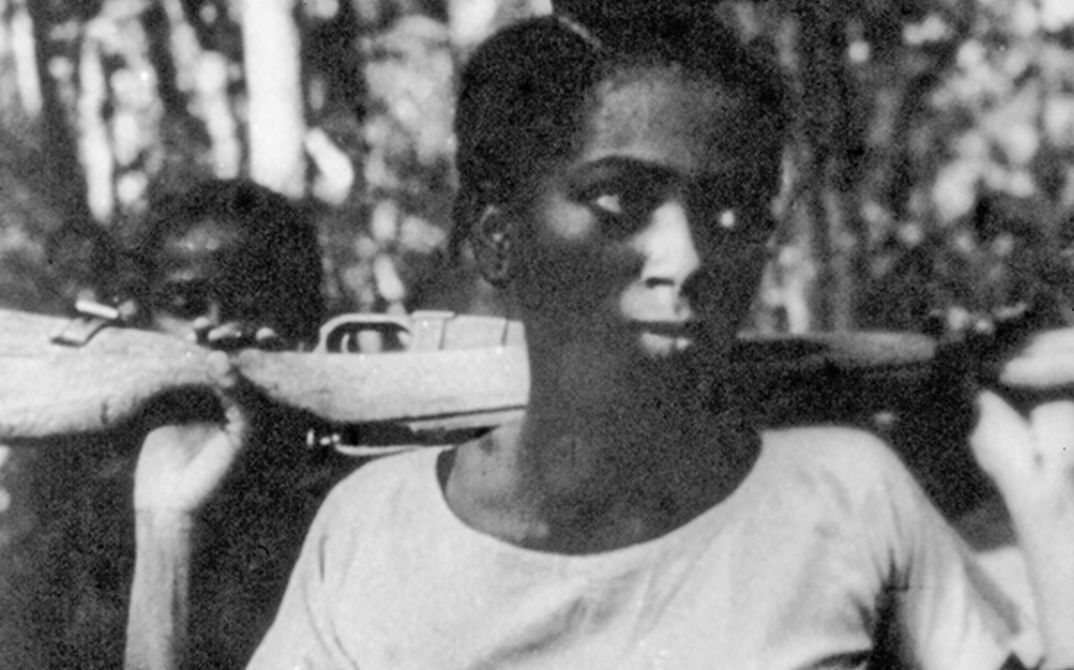Cry of revolt in Angola
“Monangambeee!” Passed on from hut to hut, from village to village, this cry made even the bravest in Angola turn pale with fear. Men, women and children took flight, seeking cover in the bush.
“Monangambeee”: this means “white death”, or at least certain deportation with no return. This cry once heralded the arrival of the Portuguese slave traders.
Today, the same cry and the same whistle resounds across the country: it is the National Liberation Front’s distinctive sign and signal to gather.
MONANGAMBEEE – but it is also the title of a film by Sarah Maldoror, adapted from the novella by the Angolan nationalist author Luandino Vieira. Vieira was arrested in 1961 and is currently serving a 14-year prison sentence.
One of the characteristics of this short film is that it was produced by the C.O.N.C.P. (Conference of Nationalist Organisations of the Portuguese Colonies), whose president is now Marcelino do Santos. For the first time, a political organisation appears as a film producer: the plan is to exploit this work commercially through the mediation of the cooperative SLON, i.e. to sell it to television and art house cinemas all over the world.
The atmosphere of suffering
The film was shot in Algeria by a director from Guadalupe with the technical aid of the National People’s Army (A.N.P.) and under the aegis of the FLN; it raised an unusual problem, namely that of its nationality. The decision fell in favour of the author Luandino Vieira, who thereby midwifed the first Angolan film. (…)
(…) Sarah Maldoror does not submit herself to the linear progress of the story and does not describe how a colonial executioner plays with his victim in a classic prison; she was interested instead in shaping anew the story of the atmosphere of suffering and of the alienation of the oppressed in a colonial society, in a slow rhythm and in an ambivalent style.
“Of course, I could have just as well shot the film in a classic prison, for example in Barberousse. But it is already almost a museum… I wanted something entirely different: the viewer should feel how the prisons in the Portuguese ‘colonies’ look: stuffed to the brim with people, bursting apart… This is why I preferred the caves of the Observatorium of La Bouzareah. When his wife visits Lucas Mateus, she finds herself in the suffocating, hermetically sealed cellar atmosphere in which the men wait, crammed together. And what are they waiting for? To be sent away from here – no one knows whither.”
(Nadia Kasji, Infoblatt No. 39, 1. Internationales Forum des jungen Films, Berlin 1971, Download PDF)
